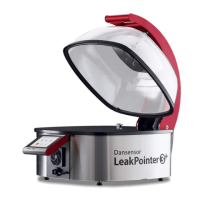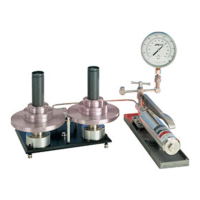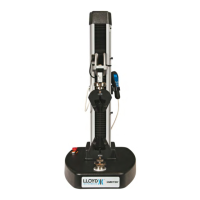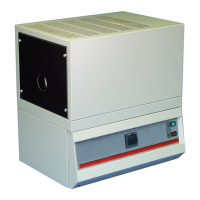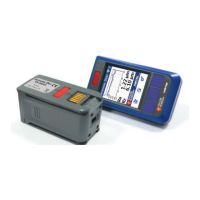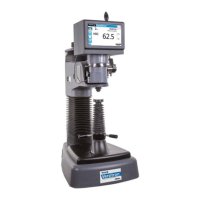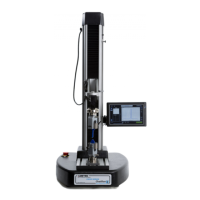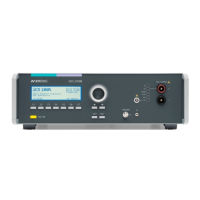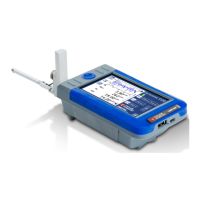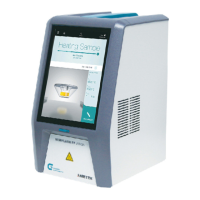
Do you have a question about the Ametek MiniFlash FP Vision and is the answer not in the manual?
| Model | MiniFlash FP Vision |
|---|---|
| Type | Flash Point Tester |
| Test Type | Flash Point |
| Sample Volume | 1 mL to 2 mL |
| Cooling | Forced Air Cooling |
| Data Storage | Internal Memory, USB |
| Connectivity | USB, Ethernet |
| Power | 100-240 V AC, 50/60 Hz |
| Resolution | 0.1°C |
| Method | ASTM D6450, ASTM D7094 |
| Display | Touchscreen |
| Measurement Range | -25°C to 120°C |
| Operating Temperature | 5°C to 40°C |
| Weight | 10 kg |
Details ASTM D6450 and D7094 standards, including their repeatability and reproducibility.
Describes the FP VISION (Type 440) and FPH VISION (Type 441) models and their temperature ranges.
Explains the operational principle of the flashpoint tester using its components and ignition process.
Lists patents protecting the MINIFLASH FP(H) Vision and provides resources for patent searches.
Lists technical specifications such as measurement units, power requirements, certificates, dimensions, and weight.
Highlights the user-friendly interface and flexible management via instrument and PC software.
Presents the End User License Agreement for the accompanying software, requiring acceptance before use.
Guides on the initial login process and the creation of user accounts via the instrument.
Explains the procedure for ending a user session on the instrument.
Details how to use fuel dilution curves to evaluate volatile substances in lubricants and motors.
Outlines various measurement methods, including ASTM standards and correlation techniques.
Stresses the importance of using the magnetic stirrer for accurate and consistent flashpoint measurements.
Covers the initial steps to start a measurement, including electrode cleaning and sample cup handling.
Explains the instrument's check for sample temperature and handling of samples that are too warm.
Details the equilibrium time and the initiation of arcs for flash point detection.
Describes the process of heating and igniting the sample to detect the flash point.
Explains the role of air introduction in the measuring chamber for ignition and flame development.
Details how the instrument detects the flash point based on pressure increase thresholds.
Covers the steps taken when a flash point is detected or the final temperature is reached.
Explains the instrument's standby mode and the conditions for automatic shutdown.
Instructions on how to access, view, and scroll through the recorded measurement results.
Refers the user to the COCKPIT software for detailed combustion analysis information.
Displays vital device information, software versions, and maintenance status.
Guides on navigating the settings menu to change language, date, time, units, and printers.
Outlines the requirements and procedure for connecting the instrument to a network.
Enables remote service connection for technical assistance from Grabner Instruments.
Information regarding the license grant for the Cockpit™ software with analyzer purchase.
Instructions for downloading, installing, and using the Cockpit™ software to update the instrument.
Instructions for cleaning the heater surface to ensure proper heat contact.
Guidance on cleaning the arc pins with a brass brush for accurate ignitions.
Steps for cleaning the temperature probe to maintain accurate temperature readings.
Procedure for cleaning the sample cup after each test to prevent contamination and ensure accuracy.
Troubleshooting steps for issues with the sample cup lift mechanism not positioning correctly.
Addresses the error message indicating the sample is too warm for measurement initiation.
Troubleshooting guide for when the instrument fails to detect a sample.
Steps to verify and troubleshoot when instrument readings deviate from expected literature values.
Guidance for diagnosing and resolving issues related to the ignition arc.
Troubleshooting steps for low or zero pressure detection values during measurements.
Steps to resolve issues with temperature fluctuations or incorrect regulation.
General advice for handling other unspecified error messages and troubleshooting steps.
Formal declaration of the product's compliance with relevant EU directives and standards.
